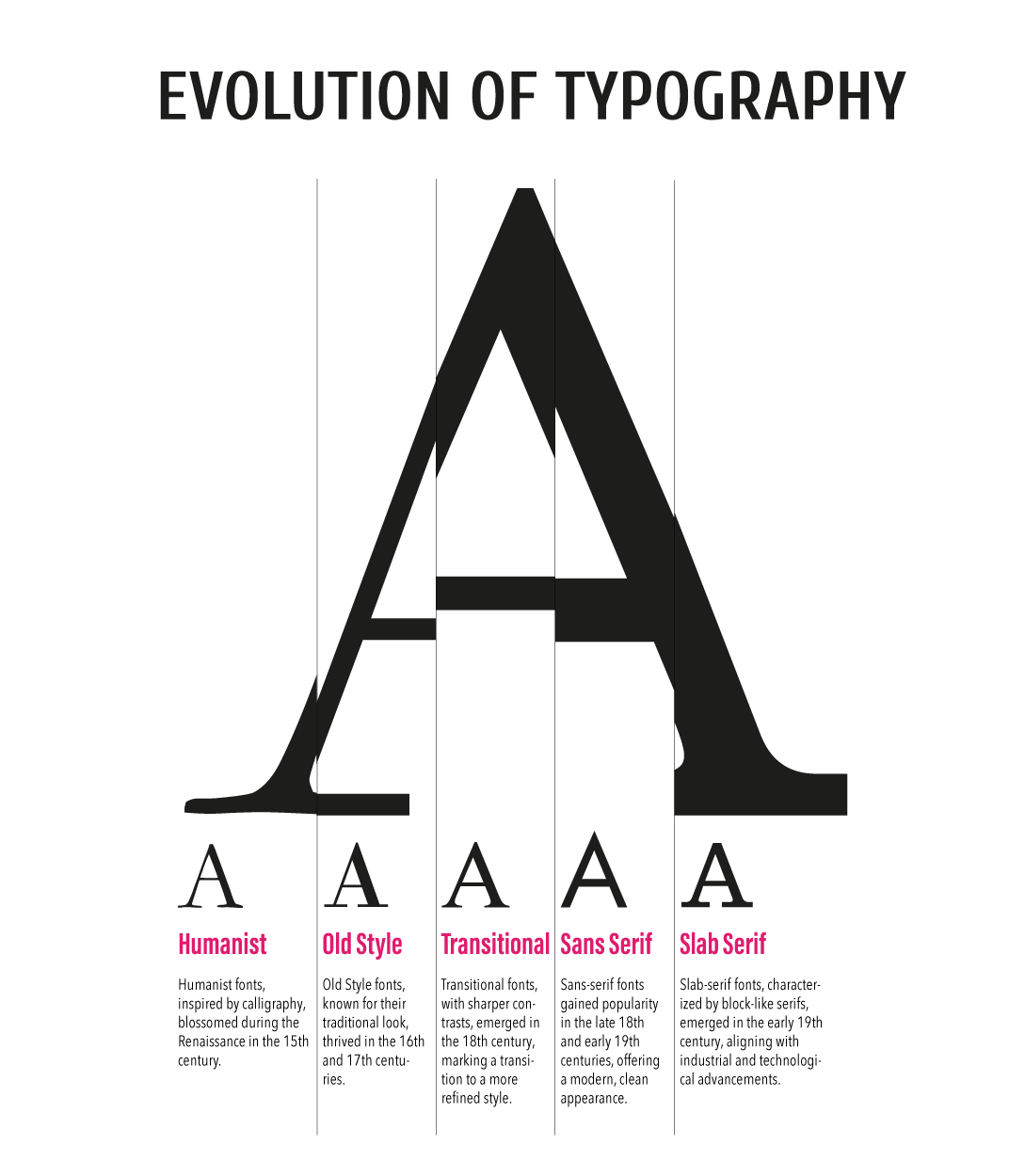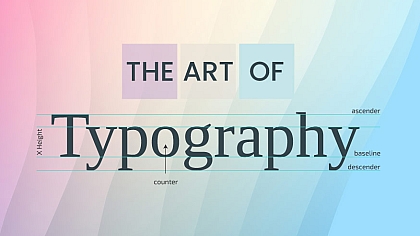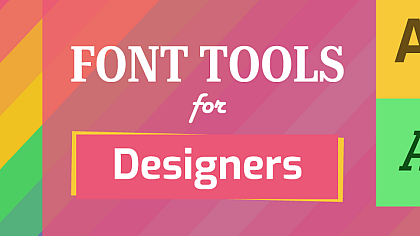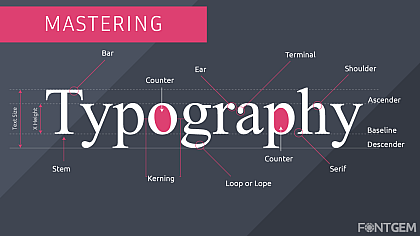
The Evolution of Typography: From Print to Digital
From Gutenberg to the Digital Age
Typography, the art and technique of arranging type to make written language legible, readable, and appealing, has a long and storied history.
From its earliest origins in the hand-written manuscripts of medieval Europe to the revolutionary invention of movable type by Johannes Gutenberg in the 15th century, typography has been a crucial aspect of human communication and expression.
In recent decades, typography has undergone a dramatic evolution, with the rise of digital technology and the internet fundamentally changing the way we interact with type.
Explore the history of typography and its evolution from print to digital, and how it has impacted design and communication in the modern age.
The Role of Typography in Design
Typography plays a critical role in design, from the layout of printed books and magazines to the design of logos and branding materials. Effective typography can enhance the readability and legibility of text, create a sense of hierarchy and organization, and convey emotions and moods.
For centuries, typography was primarily associated with print design, with typographers carefully selecting and arranging fonts for use in books, newspapers, and other printed materials. However, the rise of digital technology and the internet has led to a dramatic shift in the way typography is used in design.
The Importance of Legibility and Readability
One of the key functions of typography is to ensure that text is legible and readable, meaning that it can be easily understood by the reader. Legibility refers to the overall ease of reading text, while readability refers to the specific ease of reading a particular font or typeface.
In print design, legibility and readability are critical factors in selecting and arranging typefaces. For example, serif fonts are typically easier to read in printed materials, while sans-serif fonts are often preferred for on-screen reading.
The Birth of Digital Typography
The invention of digital typography in the 1960s marked a major turning point in the history of typography. Digital typography refers to the use of computers and digital technology to create and manipulate type.
The first digital fonts were created using vector-based software, allowing designers to create scalable types that could be resized without losing quality.
Later, the invention of desktop publishing software and the rise of the internet led to a proliferation of digital fonts, with designers able to choose from thousands of typefaces for use in their designs.
The History of Typography
The history of typography dates back to ancient times, when people would engrave messages onto stone tablets, wood, and metal. The invention of the printing press in the 15th century revolutionized the way books were produced, and typography became an art form in its own right.
Gutenberg's Bible, printed in the mid-15th century, is often regarded as a masterpiece of typography.
As printing technology advanced, so did typography. In the 19th century, designers began to experiment with different typefaces and layouts, creating a range of styles that are still popular today.
The Art Nouveau movement, for example, embraced flowing lines and organic shapes, while the Bauhaus movement embraced simplicity and geometric forms.
Evolution of Typography Styles Through the Ages
-
Humanist: During the Renaissance in the 15th century, Humanist typography emerged, drawing inspiration from handwritten manuscripts and emphasizing legibility with its calligraphic qualities.
-
Old Style: In the 16th and 17th centuries, Old Style typography gained prominence, featuring traditional and elegant designs characterized by slanted stress and moderate contrast between thick and thin lines.
-
Transitional: Transitioning into the 18th century, Transitional typography evolved, marked by sharper contrasts between thick and thin strokes, emphasizing readability and clean lines.
-
Sans Serif: The late 18th and early 19th centuries saw the rise of Sans-serif typography, characterized by its modern, sleek appearance without decorative serifs, making it suitable for advertising and display.
-
Slab Serif: Emerging in the early 19th century, Slab Serif typography featured bold, block-like serifs, reflecting the industrial and technological advancements of the era, and was often used in advertising and headlines.
The Digital Revolution
The advent of the digital age brought about a new era in typography. With the rise of desktop publishing software, designers had access to a whole new range of tools and techniques. Fonts could be easily manipulated and resized, and layouts could be created with ease.
Digital typography also brought about the use of web fonts, which made it possible to create consistent typography across different devices and platforms.
The Impact of Digital Typography
The impact of digital typography has been enormous. The ability to manipulate and resize fonts has made it possible to create a wider range of designs, from bold and striking to delicate and subtle.
Digital typography has also made it possible to create more complex layouts, with multiple typefaces and styles used in the same design.
One of the most significant impacts of digital typography has been on web design. With the rise of the internet, typography has become a crucial element in web design.
Good typography can improve readability, convey emotions, and create a visual hierarchy that guides the user through a website. Web designers have access to a vast range of web fonts that can be used to create unique and engaging designs.
The Future of Typography
As technology continues to advance, typography is likely to undergo further changes. The rise of virtual and augmented reality, for example, may create new opportunities for typography in three-dimensional spaces.
The use of artificial intelligence and machine learning may also make it possible to create more personalized typography, tailored to individual users and their preferences.
Typography has come a long way since the first printed books were produced in the 15th century. From the invention of the printing press to the rise of the digital age, typography has continued to evolve, adapting to new technologies and changing cultural trends.
Today, typography is an essential element in design and communication, with a wide range of applications across different media. The future of typography is sure to be exciting, as designers continue to push the boundaries of what is possible with this versatile art form.











